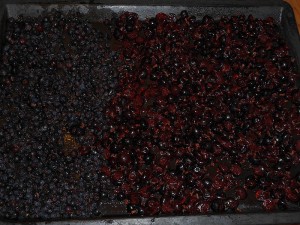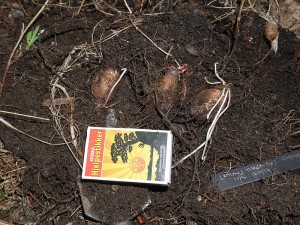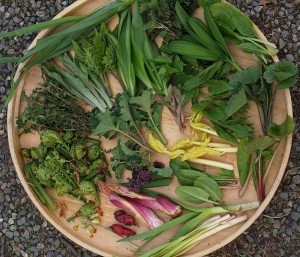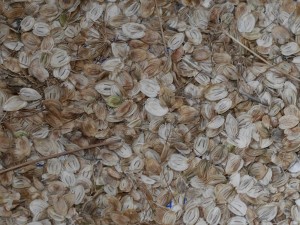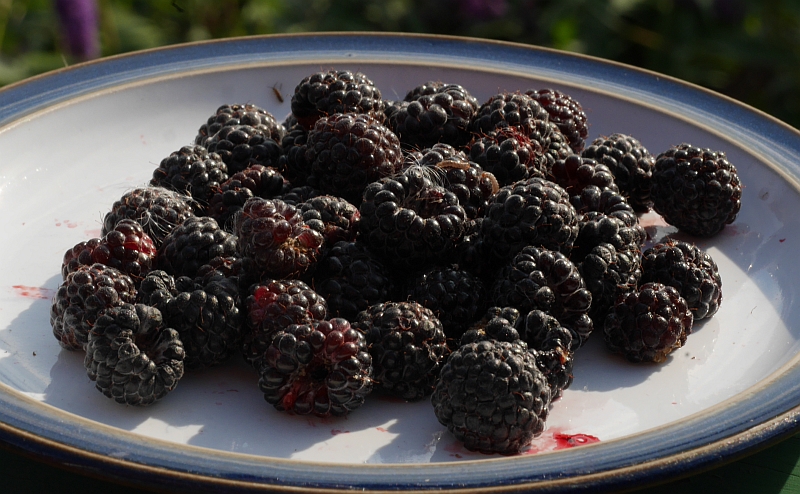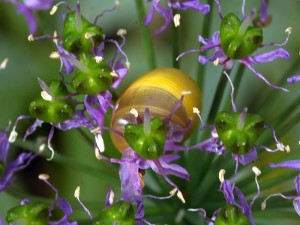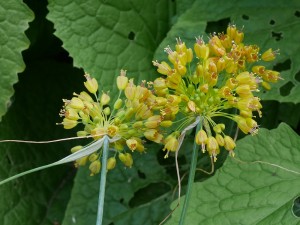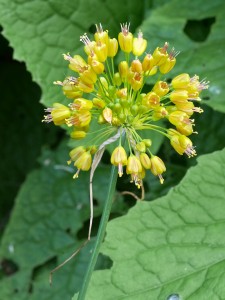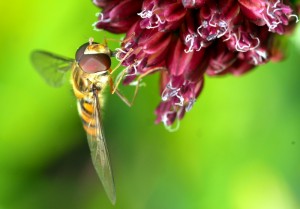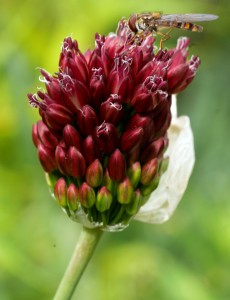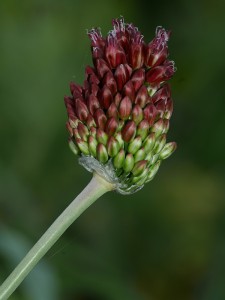There’s been an almost complete failure of apples and plums this year (this has never happened before in my 35 years here). I can’t possibly start buying fruit after many years totally self-sufficient in my own fruit :), so I’m drying some berries I don’t normally use dried for the winter, cutting them up as these are slow driers. I believe, but aren’t totally sure, that these are Worcesterberries (they are thorny bushes, otherwise I would have said that they are Jostaberries). I’m also drying a few late saskatoons (Amelanchier spp. – these I normally dry). Luckily I also still have quite a few dried apples from last year’s bumber crop.
Earthnut Pea / Lathyrus tuberosus
This is a new variety of Earthnut pea (Lathyrus tuberosus) which germinated from Danish seed I was given by NO Crossland of Danish Seed Savers (frøsamlerne). I seem to remember he had found it in an old garden. They germinated in spring 2014 but have been in a small pot ever since waiting for a place in the garden, which they got today. The tubers were already a good size!
Perennial vegetable tempura
April 2014 and Yngvil (aka Ms. Saladdy) was helping out in my garden, her practical experience for her education to become a gardener! I’ll let her tell her own story of the wonderful diverse tempura we made together on that day using perennial veggies!
See also https://saladdy.wordpress.com/2014/04/25/tempura-day
..includes ostrich fern, blanched lovage, Udo, perennial kale, moss-leaved dandelion, Allium victorialis, nettles, Aster scaber, scorzonera shoots, Campanula latifolia, Oca, Myrrhis, Allium scorodoprasum, garlic, Allium ursinum, Ligularia fischeri (first time), sea kale, Primula veris “Red Strain”, Rumex acetosa, Alliaria petiolata and a few others…
Watermelon berry
Streptopus amplexifolius has been used for its spring shoots that supposedly taste of cucumber and the ripe berries that give the plant one of its names, watermelon berry….A bit seedy (which I’m saving) but tasty! Can be laxative in large amounts! I saw a lot of this plant on the west coast of the US, but this plant originates from Europe (the plant is found in the wild both in North America, Europe and East Asia). A good forest garden plant.
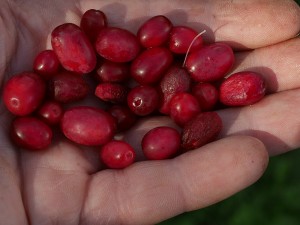
Homegrown Golpar
Black raspberry
Black raspberry (Rubus occidentalis) perfectly complements my red raspberries here as the one finishes as the other begins! I had my first blacks today (14th September 2015), seed propagated from a US variety Black Hawk some years ago…
Another reason to grow it is that a Polish study showed they contained 3 times the antioxidants as red raspberries and blackberries: http://www.digitaljournal.com/life/health/black-raspberries-are-the-antioxidant-superfood/article/453955
New Alliums
Alan Kapuler on GMOs
Wonderful, must see for anyone interested in GMOs and plant breeding! What an amazing, intelligent and warm human being Kapuler is… I was so fortunate to spend a day with Kapuler in his gardens and home on my recent visit to Oregon….I was blown away by the guy…such a warm human being too..
Pictures from my talk for Sumarhúsið og garðurinn in Reykjavik on 5th September 2015
Pictures from my talk for Sumarhúsið og garðurinn (Summerhouse and Garden magazine) in Reykjavik on 5th September 2015…..
During the talk it was decided that edimentals should be known as skrúðmeti in Iceland!!
https://www.facebook.com/sumarhusidoggardurinn/posts/1042595959106488
Workshops with the extreme salad man in Iceland in early September!
Two workshops in Iceland on my way back from the US…!!
5th September – 1pm to 5pm Sal Garðyrkjufélags Íslands, Síðumúla 1, Reykjvaík “Ætar plöntur með Stephen Barstow – Námskeið Sumarhússins og garðsins (Edible plants with Stephen Barstow)” See https://www.facebook.com/events/1479525102347465/
7th September – 10:00am to 4pm – Hlíðardalsskóli, Iceland. Workshop on “Plants worthy of trying out in Iceland” https://www.facebook.com/events/1524505947835548 and https://www.facebook.com/events/499988026842767/


